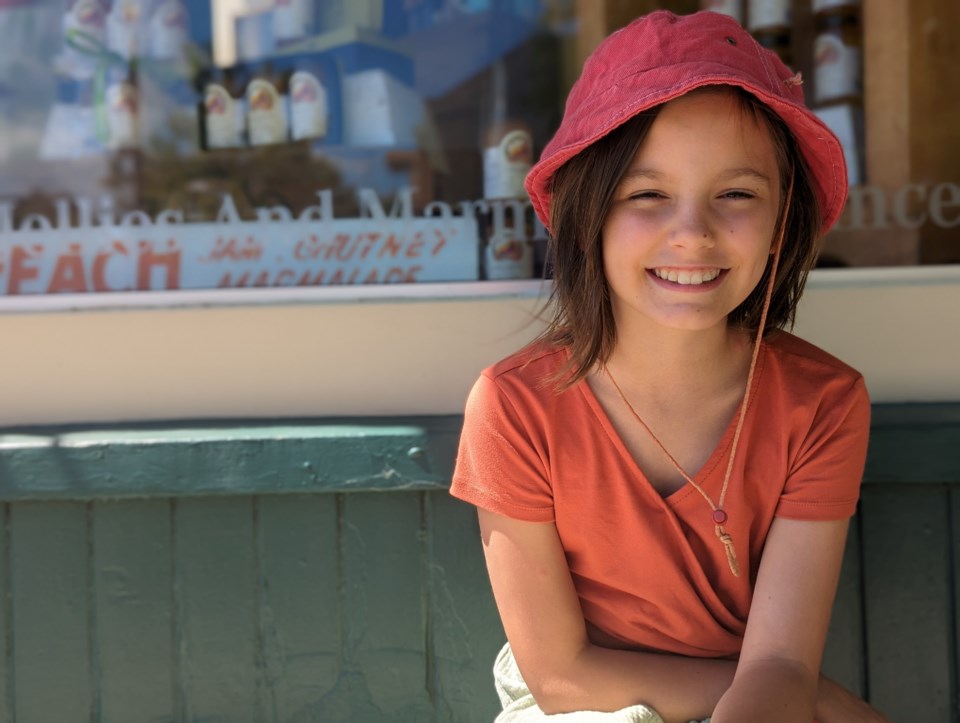This September, Grade 6 Crossroads student Greta Sobol will be the ambassador for The Sun Life Walk to Cure Diabetes.
Eleven-year-old Greta was diagnosed with type 1 juvenile diabetes when she was just nine years old, and she has been learning to manage it ever since.
“There is no known cause and there's no known cure,” said Greta’s mother, Ann Deuerlein. While the cause of type 1 diabetes is not yet entirely understood, scientists believe both genetic factors and environmental triggers are involved.
“Onset has nothing to do with diet or lifestyle. There is nothing you can do to avoid T1D, and — at present — nothing you can do to cure it,” said Deuerlein.
“Basically you don't have a working pancreas, so the body doesn't produce any insulin. Before Banting discovered insulin, it was called the wasting disease,” she said.
“You can't process any caloric intake. You can't process any of your food into energy, and type 1 diabetics are insulin dependent. Anytime they eat, they need to take insulin.”
A year and a half ago Greta’s mother and father, Jonathan Sobol, noticed that Greta experienced a dramatic weight loss. Blood work analysis led to a T1D diagnosis and Greta was immediately admitted to the hospital for a week because her “blood sugar reading was so very high and off the charts,” said Deuerlein.
Greta has the additional challenge that many diabetic children also have, celiac disease.
“It really, really sucks,” said Deuerlein. However, Greta has been managing and dealing with everything that accompanies type one diabetes. “Her life has changed dramatically. She has to constantly manage and count numbers and consider consumption. It's not carefree anymore.”
Deuerlein and Sobol have been researching diabetes since they learned of Greta’s diagnosis, and they have found solace in the company of other families experiencing the same chronic disease. It was through a T1D Facebook group that Deuerlein heard about Camp Huronda, in Huntsville.
“It's run through Diabetes Canada, and this camp is a game changer,” said Deuerlein. The entire staff at Camp Huronda has type 1 diabetes, and their mandate is to help children attain independence in managing their condition, to help them feel empowered to continue the healthy practices they learn at camp, and to know that they are not alone in living with type 1 diabetes.
Greta was not available for an interview with The Local, a sister publication of ThoroldToday, because she is currently halfway through her two-week camp stay. “She won't have any free time to write letters. She's having too much fun. That's what she told me before she headed off” to camp, said Deuerlein.
Greta wears a continuous glucose monitor, a device that is only just recently covered by the Ontario government, thanks to the activism of another Niagara youth with T1D, Maya Webster. Maya was diagnosed at the age of two. Now 11, she successfully lobbied the government for provincial medical coverage. The monitor costs $4,000.
All of the data from the monitor is constantly being fed through Greta’s phone, and is also sent to Deuerlein and Sobol’s phones so that they can stay informed. Greta also wears an Omnipod Dash to supply insulin. “Instead of having to give injections, she puts her calculations in, like her blood glucose, and her carb count for each meal into this device and it just automatically injects,” said Deuerlein.
As a high school teacher, she is very aware of the mental health cycles that all children move through, but particularly those with chronic disease. “That's why getting out to these walks and going to camp are so important,” she said. Greta has a group of friends who call themselves “dia-buddies”.
At a local Juvenile Diabetes Research Foundation (JDRF) event recently, Greta “just started talking,” said Deuerlein. “Since day one, she's put herself out there. She gave talks to classmates and she did a little road show for her school. She came into my classroom and gave it to my group of students too.”
“She's her own ambassador, and when she shared that with the representatives from JDRF, they asked her if she'd be interested in being this year's walk ambassador,” Deuerlein said.
“She's thrilled.”
Deuerlein and Sobol are co-chairing The Sun Life Walk to Cure Diabetes for JDRF on Sept. 10, at the Centennial Sports Park in Virgil.
The nation-wide walk, in its 30th year, will raise funds to accelerate the pace of T1D research. To date the walk has raised almost $135 million.
“We will be walking with many other families, friends, and supporters in the Niagara area, in support of JDRF and their mission to find a cure for T1D,” said Deuerlein.
They are expecting 200 participants. Registration begins at 10 a.m.and opening ceremonies at 10:30.
“Come out and donate to help us find a cure,” said Deuerleiin, who is looking for both sponsors and volunteers. She is thankful for the generosity of local prize donors, such as Shaw Festival and Stratus Winery, but is hopeful that more businesses can support the event.
“A cash voucher, offer of services, or an item that can be raffled off at the event,” would be appreciated,” she said. “By supporting this fundraiser, you will help fund ground-breaking research that is getting us closer to cures, as well as provide the necessary support to those living with T1D to ensure they live healthier, safer and easier lives.”
Supporters can email Deuerlein at [email protected].
In the latest JDRF newsletter, Greta was quoted as saying “I was really happy by the sense of community I saw at my first JDRF Walk last year. As a Type 1 diabetic, knowing that there are so many people going through what you are and so seeing many people trying to help, meant the world to me. This year, I’m eager and excited to do my best to help find a cure!”



